Unplugged: Spintronics – Electrical Circuits via Belts and Gears
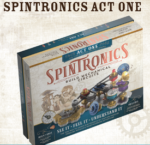 Spintronics is a mechanical model of electrical circuits using gears and belts to simulate the flow of electricity. As the final hours of the Spintronics kickstarter winds down (act fast), I thought I’d take a moment to comment on the possibilities of the nifty system. I’m fairly enthusiastic about its possibilities. At a later date I’ll provide my thoughts on its older brother, Turing Tumble, which simulates computer logic circuits using small metal balls falling through see-saws.
Spintronics is a mechanical model of electrical circuits using gears and belts to simulate the flow of electricity. As the final hours of the Spintronics kickstarter winds down (act fast), I thought I’d take a moment to comment on the possibilities of the nifty system. I’m fairly enthusiastic about its possibilities. At a later date I’ll provide my thoughts on its older brother, Turing Tumble, which simulates computer logic circuits using small metal balls falling through see-saws.
Since its Kickstarter is ending soon, I wanted to start with a look at the Spintronics system. (Note, I backed the kickstarter, so I’m pretty excited about its potential but have not been able to try things out in person – nor am I sponsored or supported by it.) The basic idea is to use a range of gears to simulate standard parts of an electric circuit, allowing one to simulate and model the idea of circuits. Gears are tied together by belts and the speed of the belts represent the amount (and direction) of the current flow. This provides an extremely visual representation of what is happening in an electric circuit.
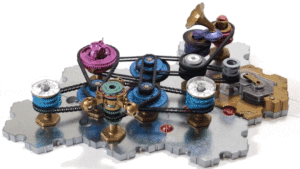
Some of the basic parts include:
A “battery”, providing the “electric potential” by charging up a spring using a pull string
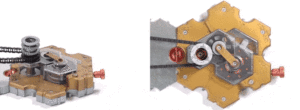
A “resistor”, based off a gear that resists the flow of the belt, able to be adjusted to represent larger or smaller values of resistance.
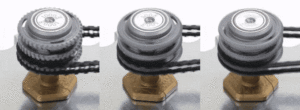
A “capacitor” which stores energy in a spring, allowing it to also serve as a voltmeter.
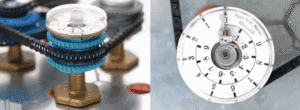
An “ammeter” which emits a sound based on the flow of current (the speed of the belt.) The “ammeter” emits a higher pitched sound when the flow is greater (faster.)
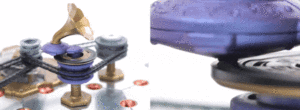
An “inductor” which uses angular momentum to store up energy. Whereas the “capacitor” quickly stores up energy in a spring, the “inductor” is harder to get moving but its momentum makes it harder to stop.
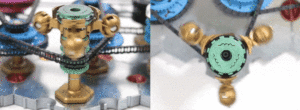
There are a few other bits, like a multi-gear junction to allow current to branch out to multiple belts, a simple on/off trigger switch, a transistor, and a possible (Kickstarter exclusive) diode element.
As with their previous title, Turing Tumble, the Spintronics system is set up to be an interactive exploration. The system comes with a newbie-friendly book of systems to build that take a newcomer to the world of circuits through basic ideas all the way up to more complicated schematics. These activities are primarily presented as a series of progressively more difficult puzzles (answers are provided, of course) that provide a guided way for users to explore how all the different parts work and how they can be combined to create new things. I’ve been impressed by the guided exploration book for their Turing Tumble system, so I have high expectations for the book(s) provided for the Spintronics system.
While animated GIFs provide some fun visualizations of the system at work, those more interested in the details of the project can check out an online simulator. The online simulator lets one select and place the standard parts into a custom build and see how everything reacts.
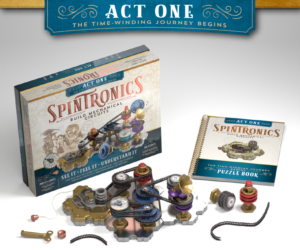
There are a lot of parts in the Spintronics system so it is put together in a couple different bits so that one can try out the first “levels” of exploration and then if it is a good fit, one can buy an additional set that expands the ideas and options available.
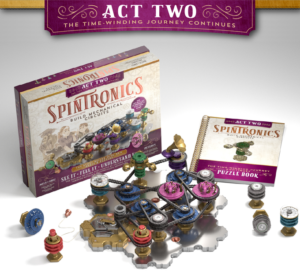
My day job is a high school physics instructor and one of the difficult bits of electricity and circuits lies in the inability to see how the charges are actually flowing through a circuit. Spintronics makes an attempt to improve conceptual understanding of circuits by providing a very concrete model of charge flow through common circuit elements. I have some reservations on whether a struggling student will improve their conceptual understanding by watching a mass of wheels, cogs, and spinning belts. However, I am very excited about the possibility of the system to provide excitement and “Ah-Ha” moments for students who already have a bit of a leaning towards science-y gadgets of this type. I may even be able to incorporate the online simulator in a future lab or two…





Discussion Area - Leave a Comment